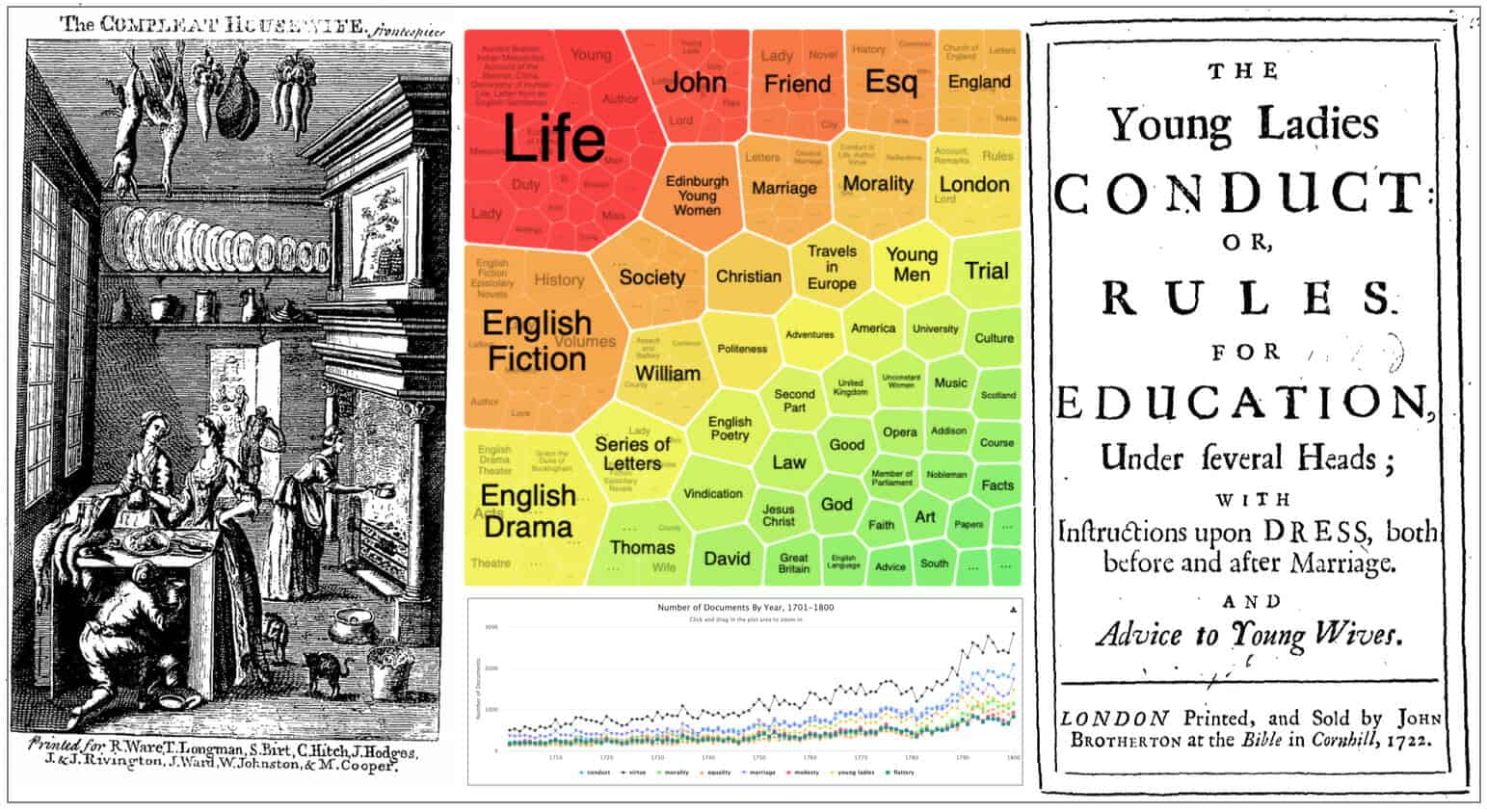│By Georgia Winrow, Gale Ambassador at Lancaster University│
Knowing where to get started with a new undergraduate research project, coursework essay or dissertation can be a daunting task. Whether you are provided with a focus to guide your work or not, getting to grips with collecting your primary source material, reading, analysing, and working out where they fit within your work can seem overwhelming! Luckily, with the Gale Primary Sources digital archives you have a range of search tools at your disposal intended to make the process that bit easier. Through an example research project using Eighteenth Century Collections Online (ECCO), this blog post will outline alternative search tools and resources available in Gale’s digital archives, and how they can be used most effectively when carrying out your own undergraduate research.
Moving Beyond the Simple Search Bar
Gale’s search tools are especially important if you are undertaking undergraduate studies: this is the first time that you will have encountered academic writing, and the various requirements that you are expected to meet when carrying out your own independent research. For me, the thought of researching and writing a dissertation was particularly intimidating, as it would be the largest piece of academic work that I will have produced to date.
When you have potentially thousands of primary source materials available to you at the touch of a button, make the most of the different avenues for advanced searching available on the Gale platform; Gale Primary Sources offers so much more than a simple keyword search. It offers resources and tools that guide you through each stage of the research process, from how to cite your sources correctly, to providing support and guidance to help you critically engage with the primary sources.
I feel that had I been aware of the various tools available through Gale earlier in my degree, I would have familiarised myself much more easily with recommended scholarly practices and enhanced my own skills as a historian!
What Comes First? Using the Learning Centers to Guide Your Research
You may be tempted to begin your search immediately with the simple search bar on the home page of the digital archive of your choice. I have certainly been guilty of this! But actually the Learning Centers, available within a range of Gale Primary Sources archives, are definitely the most useful place to begin your research. From offering information concerning the contents of the archive, how to use the various searching and filtering functions, and advice on citation practices, the Learning Centers are intended to enrich your experience of searching through the archives.
Soon, all Gale archives will have Learning Centers, so it’s worth checking if the archive you’re using has one of these study gems!
The most important aspect of the Learning Centers are the guidance that they provide researchers to follow the workflow for analysing and using primary sources which is standard practice within academia at all levels, from undergraduates right up to professors. The four-step workflow process is: Conceptualise your research question, Find your primary sources, Read and reference your sources, and finally Use the sources practically within your work.
An Example in Eighteenth Century Collections Online
Beginning a new research project using Eighteenth Century Collections Online, I first headed to the Learning Center, and then to ‘Sample Topics and Searches’ (found within the ‘Conceptualize’ section) for some inspiration. ECCO alone contains over 180,000 titles, and 32 million pages of primary source materials, so having some guidance as to where to begin looking for relevant source materials is a big help!
From the screenshot below, you can see that I decided to focus on women’s history, specifically around women’s behaviour and conduct. The advanced search term ‘women n5 behaviour’ (a proximity operator where the words ‘women’ and ‘behaviour’ appear within 5 words or less of one another), returned a corpus of nearly 2,500 results, which I was able to further reduce using the filter function.
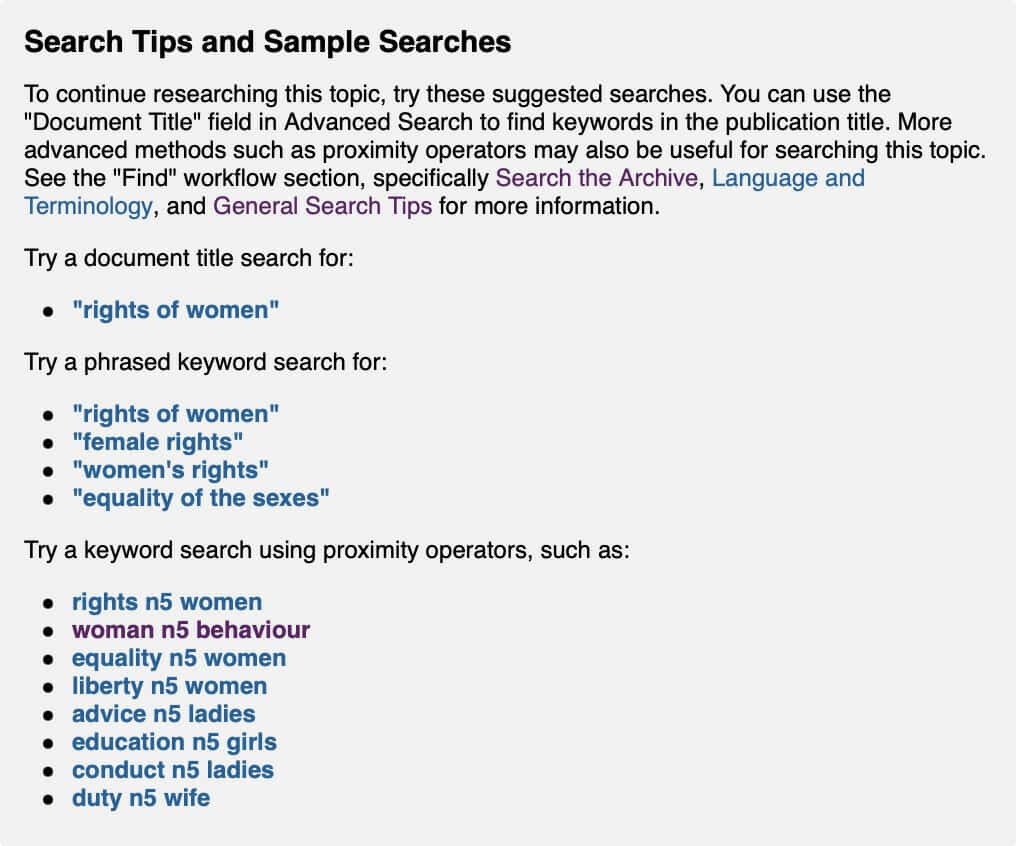
Through scrutinising some of the returned results from this initial search recommended in the Learning Center, I was able to identify a trend in the types of documentation which contained both of the keywords ‘women’ and ‘behaviour’. Most of the sources were conduct manuals or guides on how women should and were expected to behave in polite society, authored, as expected, by men. In this way, the Learning Center helped to guide me towards finding an engaging research focus.
Using a Visual Search Tool: Topic Finder
Offering an alternative to the standard and advanced search bars, the Topic Finder is a visual map of topic ‘hits’ from a chosen search term. The Topic Finder uses colour intensity to indicate which associated terms have the most hits. One of the principal benefits of a visual tool like this is that it allows you to quickly identify links across your chosen subject matter.
For instance, sticking with the research topic of women’s behaviour and conduct, I used the same search term ‘women n5 behaviour’ in the Topic Finder tool, which returned the results shown in the visualisation below. It may be a surprise to see that ‘women’ and ‘behaviour’ could be associated in some way with ‘Music’ or ‘English Poetry’, offering another avenue of research potential.
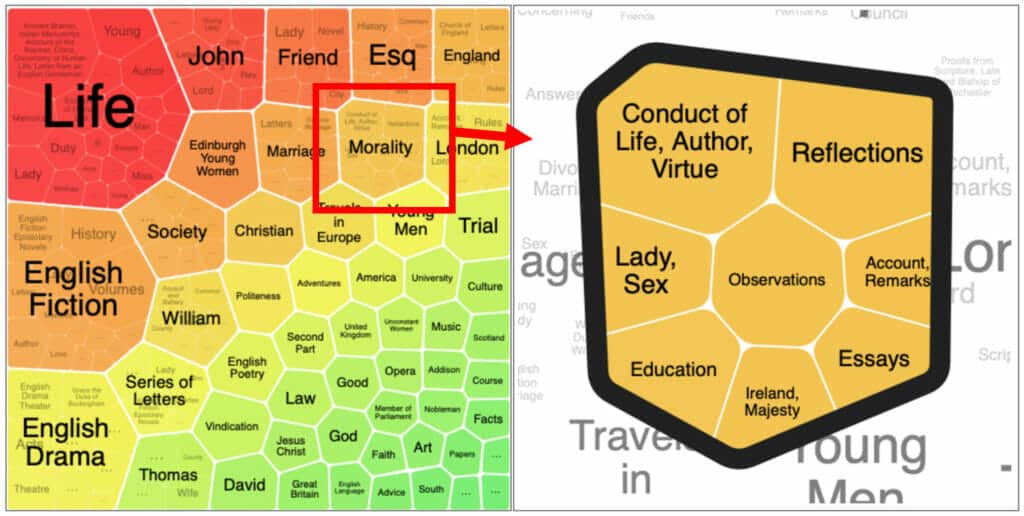
Right: Drilling into the keyword ‘Morality’ by clicking on this topic in the visualisation.
I chose to drill into the keyword ‘Morality’, and then ‘Lady, Sex’ in the Topic Finder visualisation, hoping to uncover some primary source material relating to female virtue and sexuality. One of the results was James Bland’s An essay in praise of women, published in 1735, which appears to criticise authors who review women’s behaviour in an unfavourable light. Bland chooses instead to praise women’s conduct, their commendable dress, their ‘Virtues surpassing those of Men’s’, and their ‘Beauty of Chastity’, suggesting that, in the most part, women uphold societal expectations. This source, found through the Topic Finder, could prove pivotal to a study of women’s conduct in the eighteenth century, by offering an alternative perspective to the largely negative interpretation held by male social commentators.
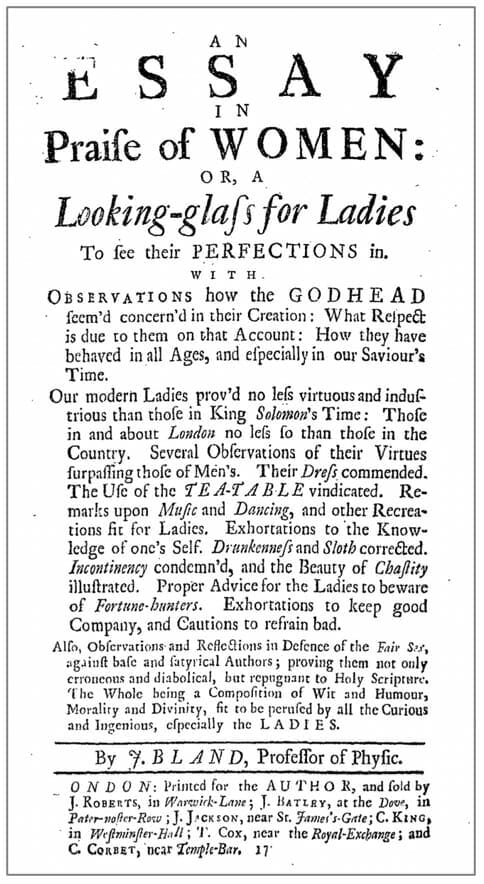
Continuity or Change? Using the Term Frequency Tool
The Term Frequency feature is another visual researching tool, most useful for research which covers a relatively broad timeframe. The principal benefit for this tool is its ability to inform you as a researcher of any continuities or changes in the digital archival records across a specific timeframe, using a selection of your keywords. As such, this tool moves beyond the close reading of specific sources to take a macroscopic view of the historical period.
Using a range of key terms which were stereotypically associated with ‘women’ and ‘women’s conduct’ during the eighteenth century, I attempted to identify some trends which may have emerged during this period. From the screenshot below, it is clear that literature containing keywords such as ‘virtue’, ‘conduct’, and ‘marriage’ increased over this period. Whilst this could be attributed to a number of factors, including an overall increase in the number of printed works being produced, and the fact such key terms were most often but not solely attributed to women, it does show a consistent increase across the board. This tool could therefore facilitate comparisons between materials produced at the turn of the eighteenth century, compared to those produced towards the end of this period, potentially illuminating previously concealed trends.
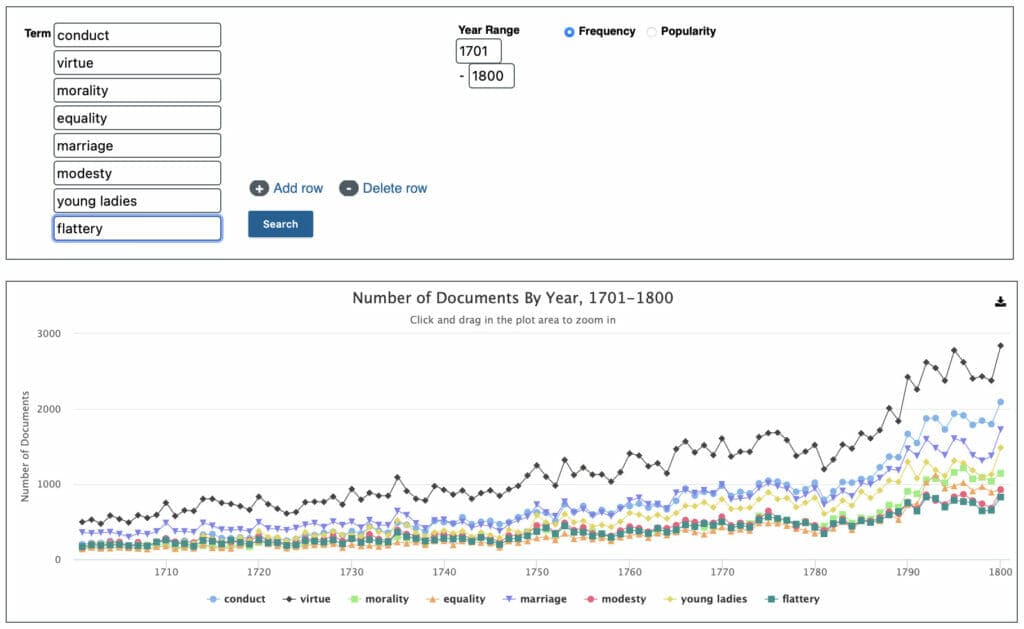
Use the Opportunity to Make New and Exciting Discoveries
The tools and resources available to you as an undergraduate researcher through Gale Primary Sources allow for more nuanced connections to be made across subject matter and the time period of the archive, which can enhance your engagement with the sources, and take your research to the next level. There is no better feeling than finding a source which slots perfectly into your research – Gale’s search tools offer you a greater opportunity to find the sources which could just be the missing piece of your research puzzle!
So, try moving beyond that simple search bar, and make the most of some alternative search tools in Gale Primary Sources.
To find the Gale Primary Sources platform, search ‘Gale’ in your library catalogue, then select ‘Gale Primary Sources’.
If you enjoyed finding out more about the various learning tools and resources available in Gale Primary Sources, you may be interested in:
- The Gale Primary Sources Learning Centers – A Student’s Perspective
- Knowing Your Learning Style Can Supercharge Your Studies
- How to Gather and Analyse Primary Sources for a Research Project
If you are interested in finding out more about Eighteenth Century Collections Online, you may like:
- Researching the History of Emotions with Gale Primary Sources
- Researching and Teaching Women Writers Using Eighteenth Century Collections Online
Blog post cover images citation: A combination of the following sources, combined with visualisations found in this blog post: Smith, Eliza. The compleat housewife: or, accomplish’d gentlewoman’s companion…, 10th ed., printed for J. and H. Pemberton, at the Golden Buck, against St. Dunstan’s Church in Fleetstreet, 1741, Eighteenth Century Collections Online, http://link.gale.com/apps/doc/CW0107473022/ECCO?u=unilanc&sid=bookmark-ECCO&xid=cb74f792&pg=1 ; Essex, John. The young ladies conduct: or, rules for education, under several heads; with instructions upon dress, both before and after marriage. And advice to young wives. Printed, and sold by John Brotherton at the Bible in Cornhill, 1722. Eighteenth Century Collections Online, http://link.gale.com/apps/doc/CW0104549811/ECCO?u=unilanc&sid=bookmark-ECCO&xid=3ee80dab&pg=1

